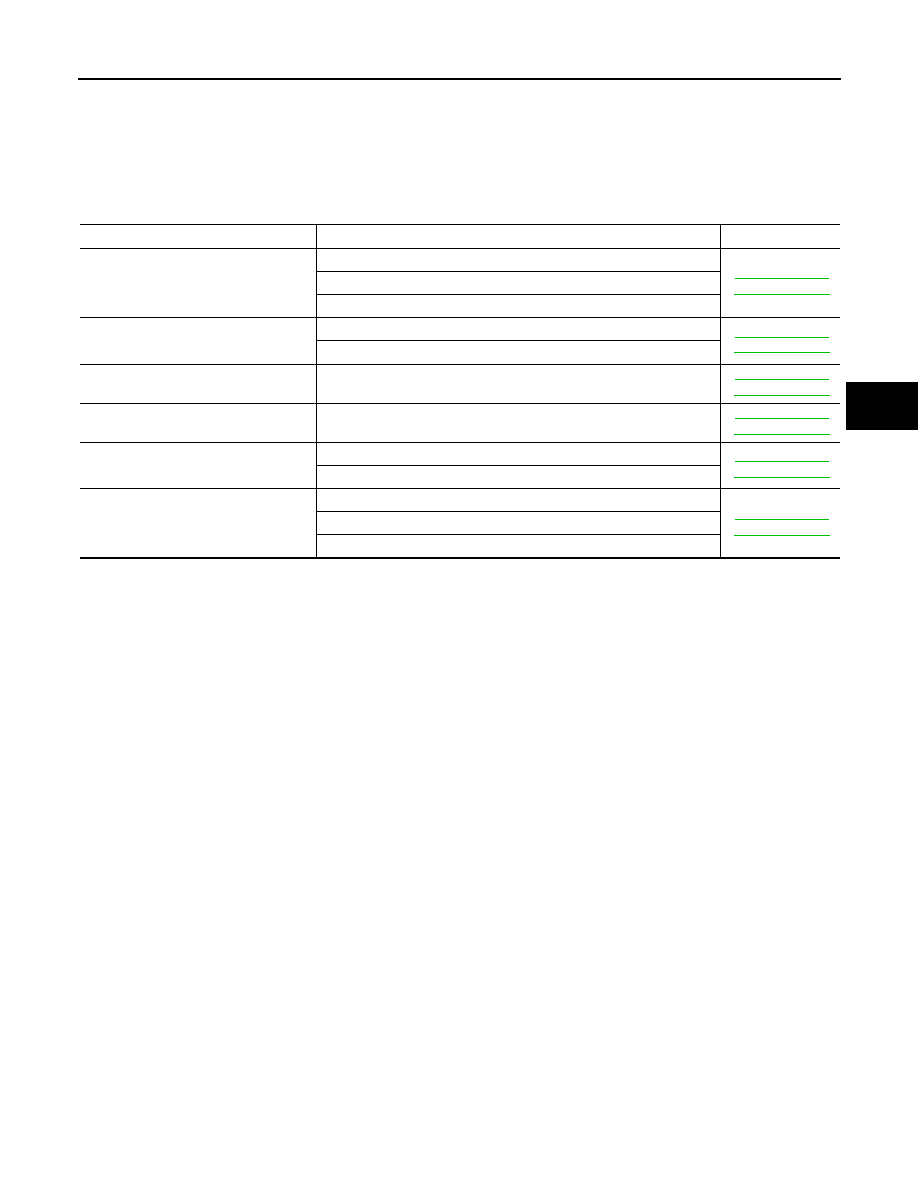Nissan Titan. Manual - part 40

VDC/TCS/ABS
BRC-101
< SYMPTOM DIAGNOSIS >
[VDC/TCS/ABS]
C
D
E
G
H
I
J
K
L
M
A
B
BRC
N
O
P
SYMPTOM DIAGNOSIS
VDC/TCS/ABS
Symptom Table
INFOID:0000000009883730
If ABS warning lamp and SLIP indicator lamp turn ON, perform self-diagnosis.
NOTE:
• 1: The ABS does not operate when the speed is 10 km/h (6 MPH) or less.
• 2: Under the following conditions, ABS is activated and vibration is felt when brake pedal is lightly depressed. However, this is normal.
- When shifting gears
- When driving on slippery road
- During cornering at high speed
- When passing over bumps or grooves [at approximately 50 mm (1.97 in) or more]
- When pulling away just after starting engine [at approximately 10 km/h (6 MPH) or higher]
Symptom
Check item
Reference
Excessive ABS function operation fre-
quency
Brake force distribution
Looseness of front and rear axle
Wheel sensor and rotor system
Unexpected pedal reaction
Brake pedal stroke
Make sure the braking force is sufficient when the ABS is not operating.
The braking distance is long
Check stopping distance when the ABS is not operating.
ABS function does not operate (Note 1)
ABS actuator and electric unit (control unit)
Pedal vibration or ABS operation sound
occurs (Note 2)
Brake pedal
ABS actuator and electric unit (control unit)
Vehicle jerks during VDC/TCS/ABS con-
trol
ABS actuator and electric unit (control unit)
TCM
ECM